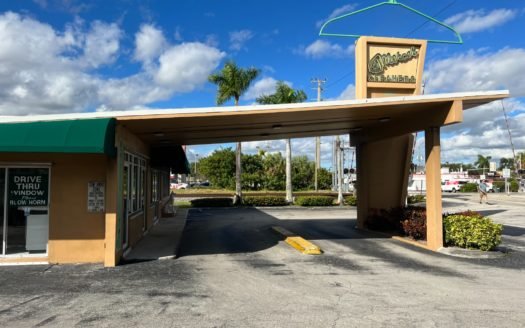Emptying office buildings bring back memories of mall failures
What the U.S. office market can learn from the evolution of malls
By Ashley Fahey and James McCandless | September 6, 2023 | South Florida Business Journal
Windsor Park Mall in the San Antonio suburb of Windcrest, Texas, is a classic example of the upheaval, disruption and innovation retail real estate has experienced in the past 20 years.
Windsor Park opened in the 1970s as a typical American suburban mall. Although successful during the ‘80s and ‘90s, a string of exits by its anchors, starting with Montgomery Ward in 2001, eventually led to its closure in 2005. The rise of e-commerce created new challenges for brick-and-mortar retailers, ultimately killing off several chains — the lifeblood of the mall.
In 2007, San Antonio-based cloud-computing firm Rackspace, in a deal with the city of Windcrest, bought and renovated the 1.6-million-square-foot Windsor Park Mall as its headquarters.
For many former malls, that would’ve been the end of the story. But the Covid-19 pandemic, and its permanent alteration of how people view the office and work more generally, created a new twist. In 2022, Rackspace said it would vacate the building, move to a smaller location closer to where its employees live and sell the property.
That means the former retail center is on the cusp of undergoing yet another revolution, It’s a transformation that could serve as a litmus test for how office buildings that have fallen out of favor with tenants may be reimagined.
Adjusting to a new reality
As office owners and brokers navigate the turmoil facing the office sector — weaker leasing activity, tenants downsizing or exiting their spaces, value declines, and higher vacancy rates — some parallels are emerging between today’s office buildings and what happened with malls in recent decades.
For one, the success of both malls and office buildings is reliant on people using those spaces — and frequently. The demise of certain malls or office towers is directly correlated to a structural shift in demand. For malls, it was the ease and convenience of shopping online; for office, it’s the ease and convenience of working from home.
The flight-to-quality trend driving today’s office market is also true of retail. Enclosed malls that remain successful have been significantly invested in and have successfully lured the kind of experiential retailers that are needed to bring in foot traffic today. In the office market, trophy towers with the latest and greatest amenities, or ones that’ve been significantly renovated, are the ones drawing the most interest from tenants.
Chad Knibbe, a longtime retail broker and principal and co-owner of Foresite Commercial Real Estate in San Antonio, said the owners of the largest, emptiest office properties should be concerned. As people were predicting the death of retail in the late aughts as Amazon.com Inc. (Nasdaq: AMZN) gained market share, that largely applied to Class B malls heavily reliant on big-box anchors.
Despite those properties being a small portion of the market, he said the institutional ownership of those assets was what the public paid attention to most at the time.
“Those are big and that’s a huge percentage of the market if you look at square footage or dollar volume, but just in the number of properties, the institutional market is pretty small. So, although things looked really bad and dire for indoor malls, that wasn’t an overall reflection of the entire retail industry,” Knibbe said.
The stakes may be even higher with the aging, older office stock that’s fallen out of favor with tenants.
The value destruction of several office buildings in one concentrated area could have negative ripple effects for nearby hotels, retailers and other businesses, said Phil Mobley, national director of office analytics at CoStar Group Inc. (Nasdaq: CSGP).
San Francisco, which had an office vacancy rate of 31.6% at the end of the second quarter, according to CBRE Group Inc. (NYSE: CBRE), is a stark example. Because of less daytime traffic from office workers, not to mention crime and public-safety concerns, several retailers have decided to close stores in once-prominent retail submarkets. The owners of Westfield San Francisco Centre — the city’s biggest shopping center — stopped making debt payments this summer and said they were returning the property to its lender. A Whole Foods Market flagship store in San Francisco’s Mid-Market neighborhood, open for a little more than a year, closed permanently in April. Park Hotels & Resorts Inc. (NYSE: PK) also stopped making debt payments on the 1,921-room Hilton San Francisco Union Square and the 1,024-room Parc 55 San Francisco hotels this summer, citing sluggish business travel and weaker-than-expected convention business in the city.
“People want to do the same thing from a different place,” Mobley said. “In retail’s case … the rise of e-commerce is real, and certainly impacted the sector, but it turns out, we still want to go to stores to buy things. (We’ve) adapted the use of retail to accommodate that structural change but also accommodate people wanting to buy things in stores.
“It’s going to be really fascinating to see if and when that plays out in office,” he said.
View the full article on bizjournals.com





